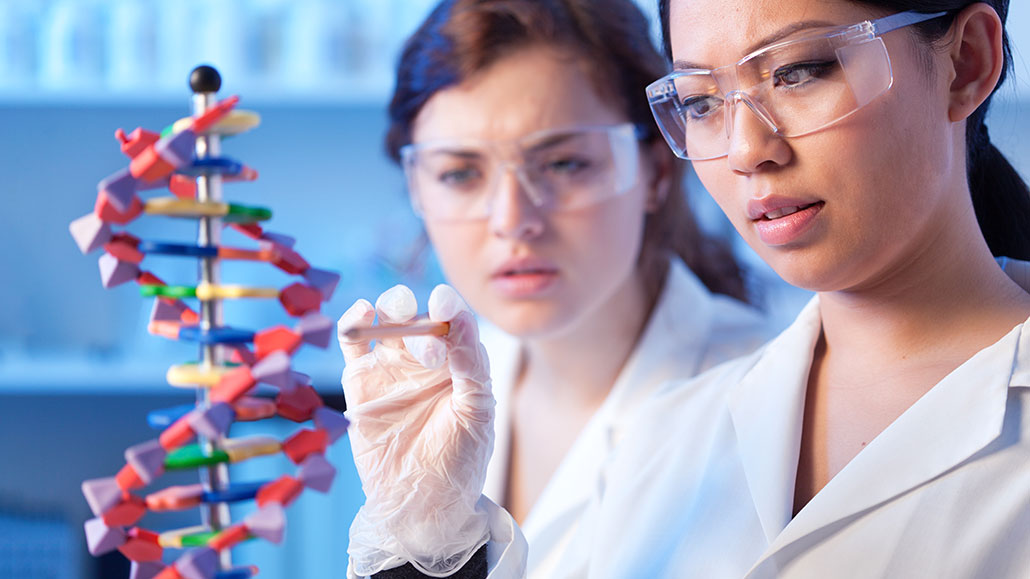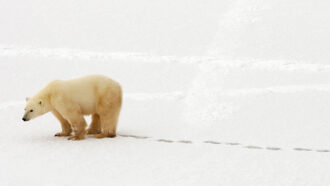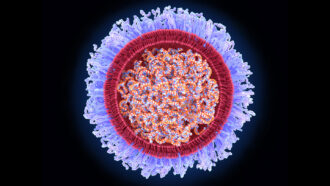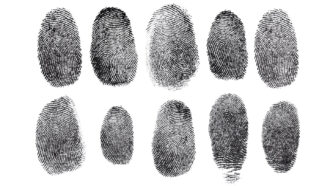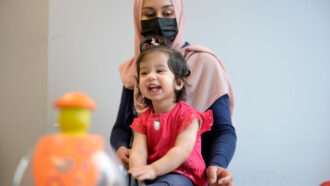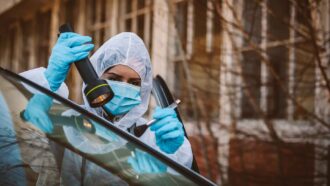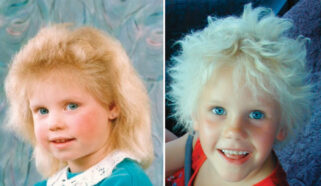behavior: The way something, often a person or other organism, acts towards others, or conducts itself.
bond: (in chemistry) A semi-permanent attachment between atoms — or groups of atoms — in a molecule. It’s formed by an attractive force between the participating atoms. Once bonded, the atoms will work as a unit. To separate the component atoms, energy must be supplied to the molecule as heat or some other type of radiation.
breed: (noun) Animals within the same species that are so genetically similar that they produce reliable and characteristic traits. German shepherds and dachshunds, for instance, are examples of dog breeds. (verb) To produce offspring through reproduction.
cell: The smallest structural and functional unit of an organism. Typically too small to see with the unaided eye, it consists of a watery fluid surrounded by a membrane or wall. Depending on their size, animals are made of anywhere from thousands to trillions of cells. Most organisms, such as yeasts, molds, bacteria and some algae, are composed of only one cell. (in telecommunications) A technology that relies on a large number of base stations to relay signals. Each base station covers only a small area, which is known as a cell. Phones that rely on this system are typically referred to as cell phones.
chemical: A substance formed from two or more atoms that unite (bond) in a fixed proportion and structure. For example, water is a chemical made when two hydrogen atoms bond to one oxygen atom. Its chemical formula is H2O. Chemical also can be an adjective to describe properties of materials that are the result of various reactions between different compounds.
chemistry: The field of science that deals with the composition, structure and properties of substances and how they interact. Scientists use this knowledge to study unfamiliar substances, to reproduce large quantities of useful substances or to design and create new and useful substances. (about compounds) Chemistry also is used as a term to refer to the recipe of a compound, the way it’s produced or some of its properties. People who work in this field are known as chemists. (in social science) A term for the ability of people to cooperate, get along and enjoy each other’s company.
chromosome: A single threadlike piece of coiled DNA found in a cell’s nucleus. A chromosome is generally X-shaped in animals and plants. Some segments of DNA in a chromosome are genes. Other segments of DNA in a chromosome are landing pads for proteins. The function of other segments of DNA in chromosomes is still not fully understood by scientists.
CRISPR: An abbreviation — pronounced crisper — for the term “clustered regularly interspaced short palindromic repeats.” These are pieces of RNA, an information-carrying molecule. They can guide an enzyme, called Cas9, to cut through genetic material like a scissors. In this way, they can edit — or alter — specific genes so that they can then study how those genes works, repair damage to broken genes, insert new genes or disable harmful ones.
diversity: A broad spectrum of similar items, ideas or people. In a social context, it may refer to a diversity of experiences and cultural backgrounds. (in biology) A range of different life forms.
DNA: (short for deoxyribonucleic acid) A long, double-stranded and spiral-shaped molecule inside most living cells that carries genetic instructions. It is built on a backbone of phosphorus, oxygen, and carbon atoms. In all living things, from plants and animals to microbes, these instructions tell cells which molecules to make.
filter: (n.) Something that allows some materials to pass through but not others, based on their size or some other feature. (v.) The process of screening some things out on the basis of traits such as size, density, electric charge. (in physics) A screen, plate or layer of a substance that absorbs light or other radiation or selectively prevents the transmission of some of its components.
function: (in math) A relationship between two or more variables in which one variable (the dependent one) is exactly determined by the value of the other variables.
gene: (adj. genetic) A segment of DNA that codes, or holds instructions, for a cell’s production of a protein. Offspring inherit genes from their parents. Genes influence how an organism looks and behaves.
genetic: Having to do with chromosomes, DNA and the genes contained within DNA. The field of science dealing with these biological instructions is known as genetics. People who work in this field are geneticists.
genome: The complete set of genes or genetic material in a cell or an organism. The study of this genetic inheritance housed within cells is known as genomics.
guanine: One of four substances that organisms need to produce DNA.
information: (as opposed to data) Facts provided or trends learned about something or someone, often as a result of studying data.
molecule: An electrically neutral group of atoms that represents the smallest possible amount of a chemical compound. Molecules can be made of single types of atoms or of different types. For example, the oxygen in the air is made of two oxygen atoms (O2), but water is made of two hydrogen atoms and one oxygen atom (H2O).
multicellular: Having or consisting of many cells. This includes all animals and plants, and many types of fungus.
nucleotides: The four chemicals that, like rungs on a ladder, link up the two strands that make up DNA. They are: A (adenine), T (thymine), C (cytosine) and G (guanine). A links with T, and C links with G, to form DNA. In RNA, uracil takes the place of thymine.
organism: Any living thing, from elephants and plants to bacteria and other types of single-celled life.
phosphate: A chemical containing one atom of phosphorus and four atoms of oxygen. It is a component of bones, hard white tooth enamel, and some minerals such as apatite.
population: (in biology) A group of individuals from the same species that lives in the same area.
precision medicine: Also known as personal medicine, it is an emerging field of health care that bases decisions about disease prevention and treatment on information about the individual. This will include not only their DNA, but also that person’s behaviors, diet and environment.
protein: A compound made from one or more long chains of amino acids. Proteins are an essential part of all living organisms. They form the basis of living cells, muscle and tissues; they also do the work inside of cells. Among the better-known, stand-alone proteins are the hemoglobin (in blood) and the antibodies (also in blood) that attempt to fight infections. Medicines frequently work by latching onto proteins.
replicate: (in biology) To copy something. When viruses make new copies of themselves — essentially reproducing — this process is called replication. (in experimentation) To copy an earlier test or experiment — often an earlier test performed by someone else — and get the same general result. Replication depends upon repeating every step of a test, one by one. If a repeated experiment generates the same result as in earlier trials, scientists view this as verifying that the initial result is reliable. If results differ, the initial findings may fall into doubt. Generally, a scientific finding is not fully accepted as being real or true without replication.
sea: An ocean (or region that is part of an ocean). Unlike lakes and streams, seawater — or ocean water — is salty.
sequencing: Technologies that determine the order of nucleotides or letters in a DNA molecule that spell out an organism’s traits.
solution: A liquid in which one chemical has been dissolved into another.
sponge: (in biology) A primitive aquatic animal with a soft, porous body.
tool: An object that a person or other animal makes or obtains and then uses to carry out some purpose such as reaching food, defending itself or grooming.
Wi-Fi: A wireless technology that networks various electronic devices (such as cell phones and laptop computers); it allows them to share the same modem for Internet connections by using radio waves.
